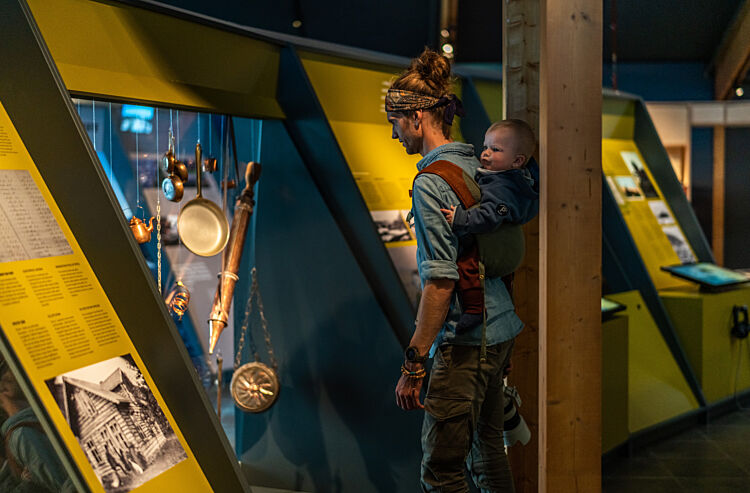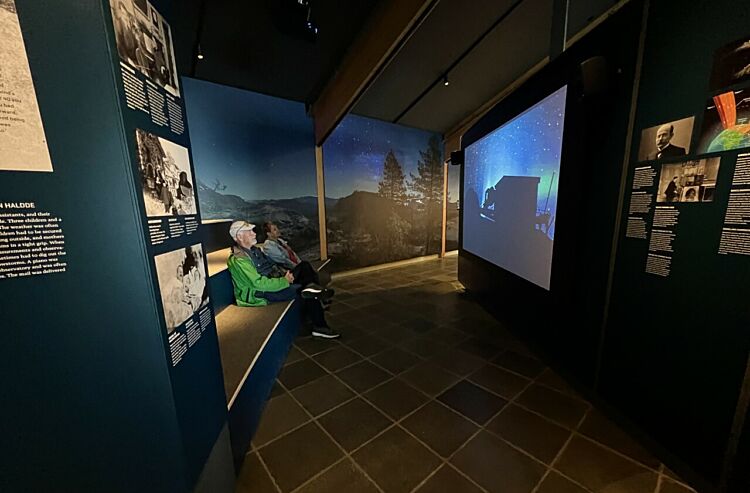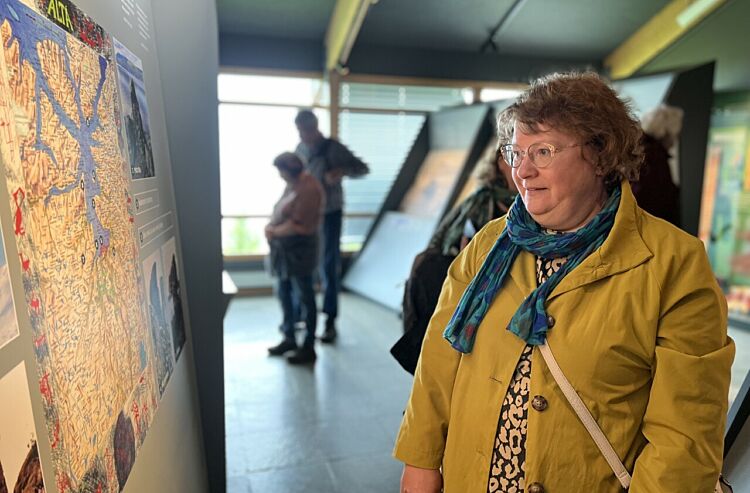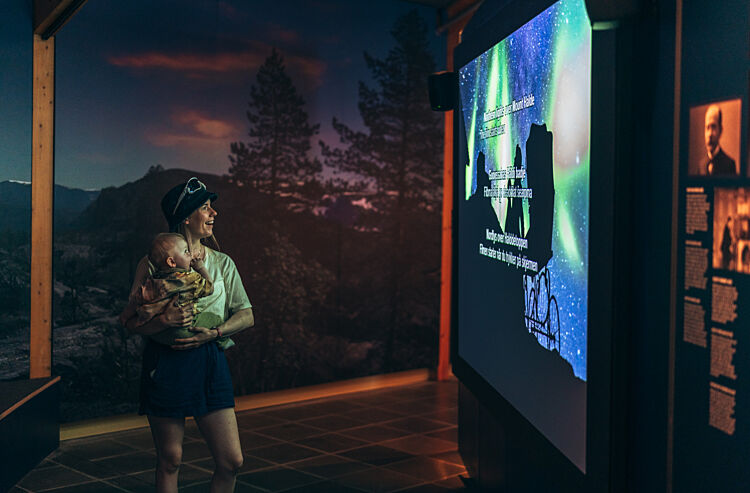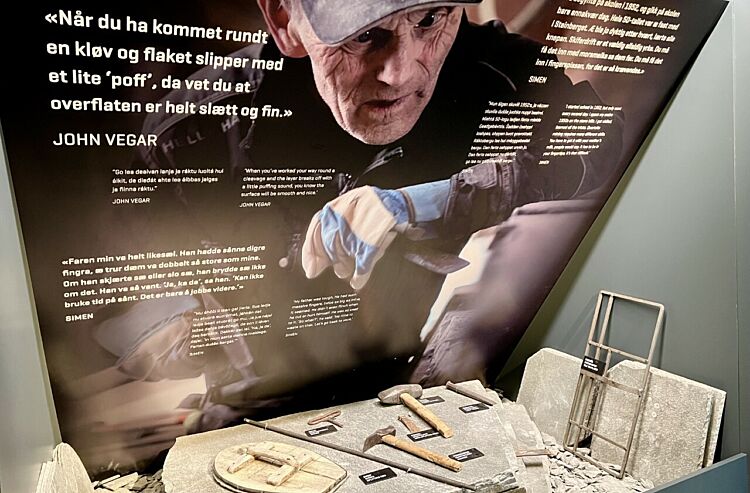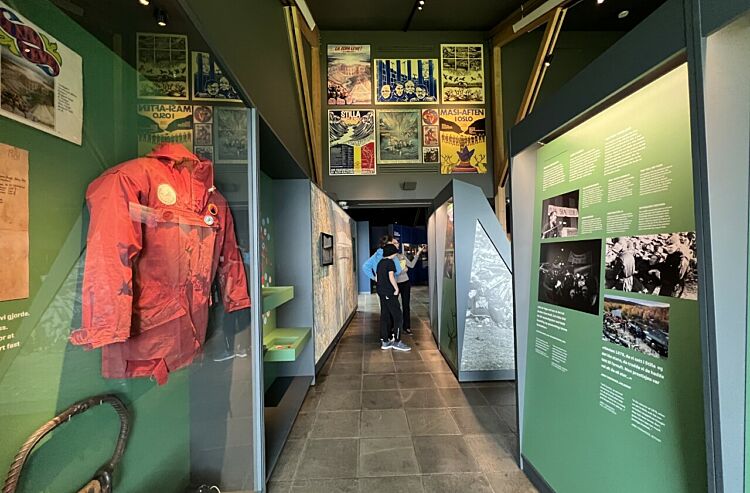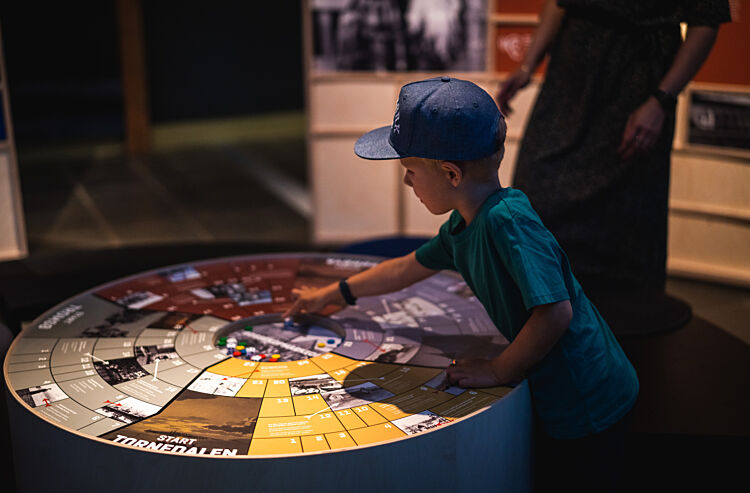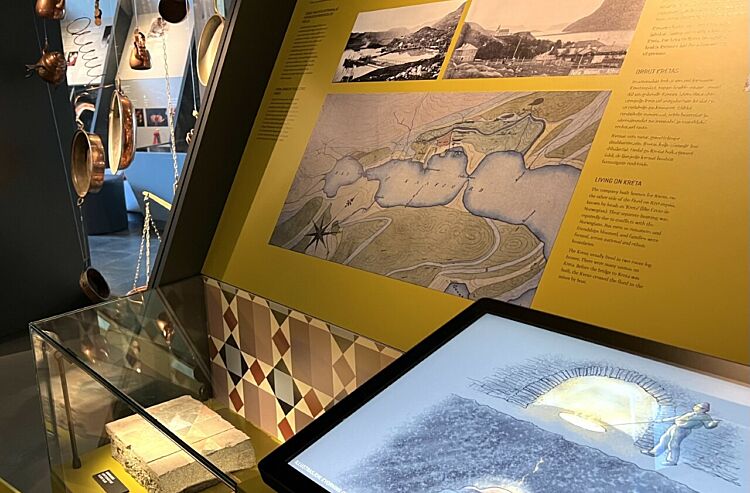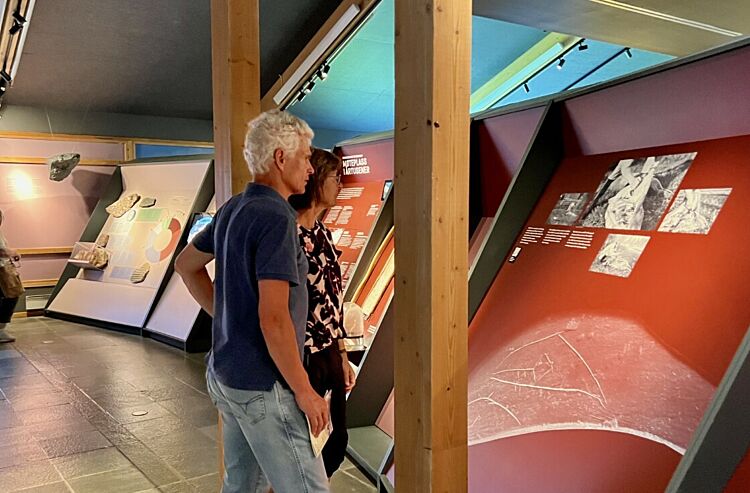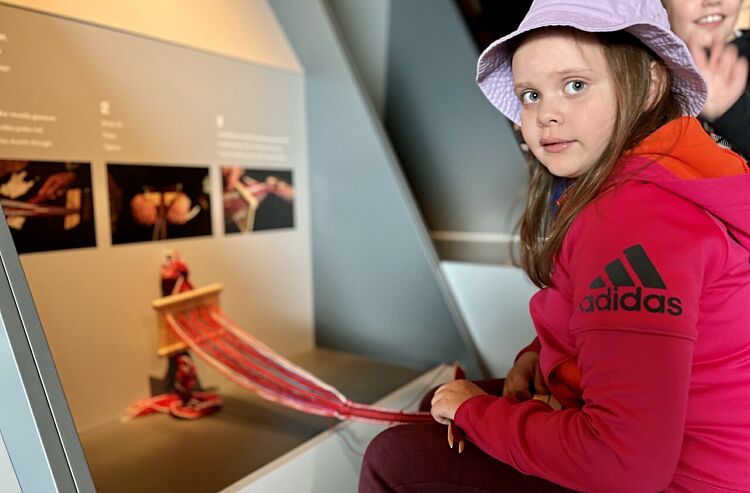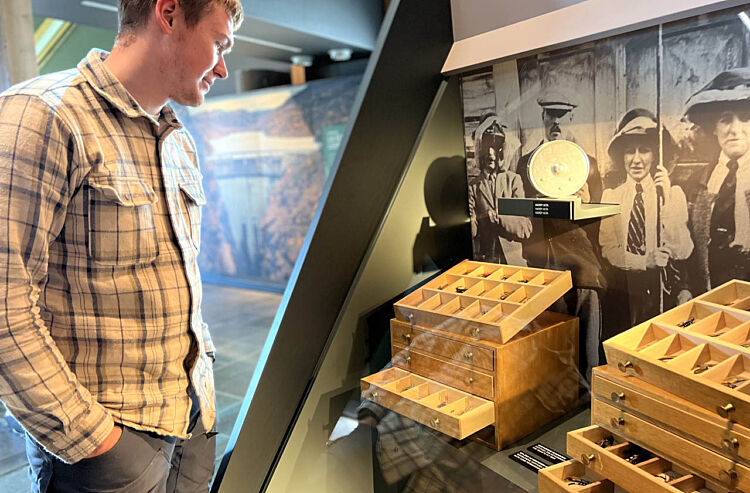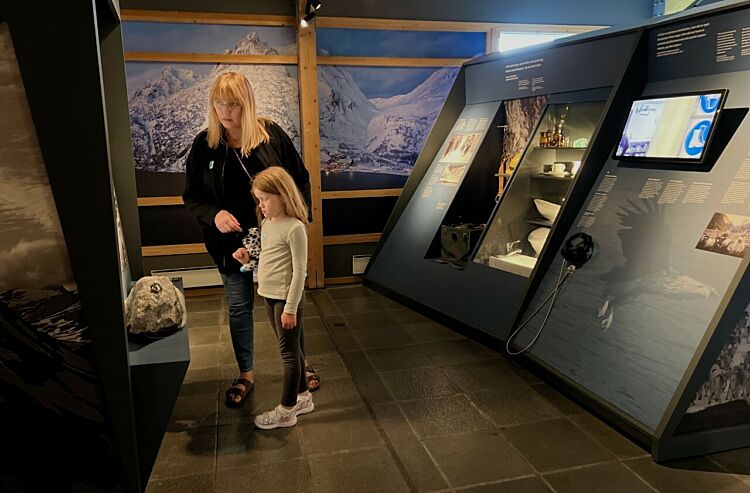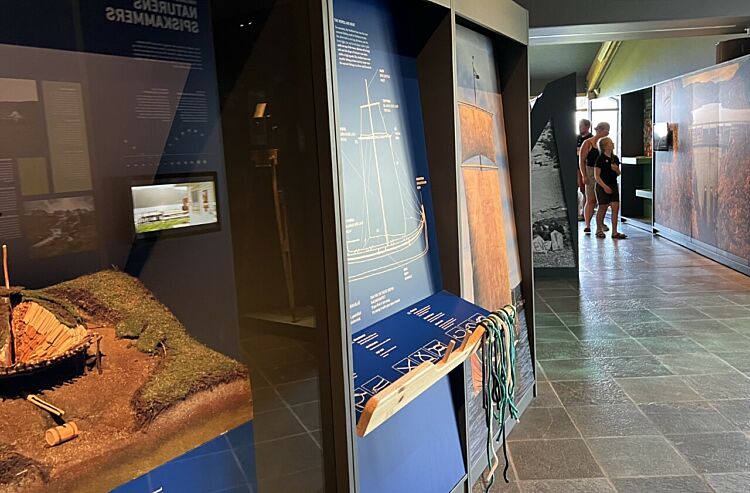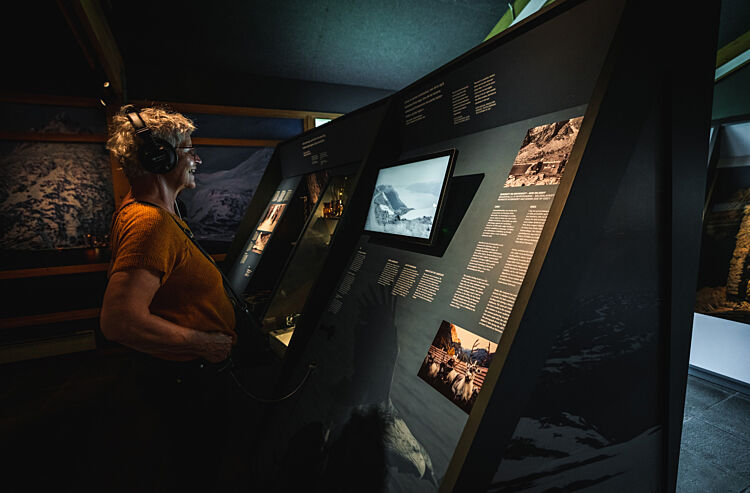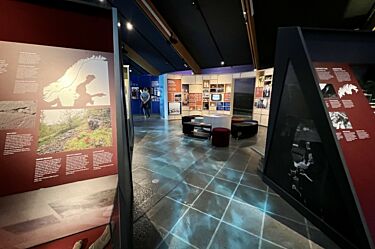
Resources and Identity
Alta Museum's new permanent exhibition Resources and Identity highlights select themes from Altas unique past and present, from the Stone Age until today.
Resources and Identity is designed and produced by Kvorning Design og Kommunikation, and Creative Technology Norway (formerly known as Bright Norway). The exhibition investigates how Alta's natural resources form the foundation for human activity and identity in the area. In addition to several new themes, the exhibition presents a continuation of themes from the museum's previous exhibitions which opened with the new museum in Hjemmeluft/Jiepmaluokta in 1991. This time the exhibited stories are connected more closely to people and their everyday life experiences.
The exhibition consists of the following twelve themes:
Alta’s geology: The ancient bedrock
The bedrock in Alta is ancient, diverse - and very special. The bedrock tends to be hidden below other rock types, but in Alta it is out in the open. This allows you to catch a glimpse of the very oldest life on earth and study beautiful mineral crystals forged in the earth’s interior a hundred million years ago. Its riches have benefited humans ever since they settled in Alta 11,500 years ago.
Prehistoric rock mining: An ancient meeting place
After the last ice age, about 11, 000 years ago, humans settled by the Alta fjord. They found material for toolmaking here, and everything else they needed. Red-green slate and the minerals chert and asbestos were popular in the Stone Age. They are rare in other parts of the Nordic region, but can all be found here in Alta. Some rock types were conveniently located by the ocean, making transport easier. Chert from Alta has been found in many places across the north. This suggests that people have been coming here from afar for thousands of years.
The Alta Conflict: Let the river live!
Hunger strikes and activists chained together – the resistance against the hydroelectric project in the Alta-Kautokeino watercourse was dramatic. The activists fought to preserve the natural environment and to protect Sámi rights. The authorities responded with Norway’s largest peacetime police operation. 12 years of struggle left a permanent legacy and became a turning point for both Sámi policies in Norway and environmental protection. The Sautso dam, 110 meters high, was Norway’s last large hydroelectric construction.
The Alta River: The world’s best salmon river
The Alta River: 46 kilometres teeming with excitement, from the Sautso dam to the fjord. Home of the legendary Alta salmon, and a pilgrimage site for anglers from near and far since the mid-1800s. Midnight sun and mosquitos, humans vs. salmon, and people coming together. Dreams of trophy fish above 20 kg. Experiencing the magic of wild nature and being part of the river’s history.
The Alta salmon: The home-loving globetrotter
Follow the salmon from its birth, through the dangerous fjord, then back home as an adult seeking to ensure the survival of the species. We now finally know where the salmon travel, what they eat, and who they encounter during the years they spend growing big in the ocean.
Farmlands by the sea: Nature’s food pantry
For centuries many of Alta’s inhabitants were ‘fisher-farmers’, living on both fishing and small-scale farming. Harvesting from both ocean and land was a necessity of life, and the work followed the rhythm of the seasons. Modernisation made such combined livelihood unprofitable, and people would either specialise or find new kinds of work.
Sámi history: The Sámi by the Alta fjord
Sápmi is the land of the Sámi. It stretches across four nation states: Norway, Sweden, Finland and Russia. In the story of Norway, Sámi culture was for a long time only associated with reindeer herding, and Sea Sámi culture became invisible. Now local and personal stories are bringing it back into view.
Kåfjord Copper Works: A melting pot in Kåfjord
In the 19th century, Kåfjord grew from a tiny village to the biggest community in Finnmark. People from all of Norway and abroad came to work for its new copper industry. The community prospered. Salaries were high and benefits were good for their time. The mines operated in two periods: from 1826 to 1878, run by Englishmen, and from 1896 to 1909, with Swedish directors.
Alta quartzite: 170 years of craftsmanship
In the 1850s people in Alta started using quartzite tiling for their roofs. From the 1950s, Alta’s quartzite has been exported around the whole world. It is solid and durable, and can be used indoors as well as outdoors, in walls and on roofs, in town squares and railway platforms. Quartzite production has long been among Alta’s most important industries and sources of income.
Trade in Alta:
Travel and commerce
Alta has been an important meeting place in Finnmark since the Stone Age. People would come here from all over the northern parts of today’s Nordic countries and Russia for trading opportunities. Whether through gift exchanges, bartering, or the trade of goods and experiences, Alta has always had an important role in Finnmark’s trade.
Nepheline syenite on Stjernøya: From rock to fine porcelain
A treasure is hidden inside the Nabbaren mountain on Stjernøya island. At 700 meters above sea level workers extract nepheline syenite from a mine and an open pit, and then refine it before shipping it out to the whole world. Alta’s nepheline can be found in everyday objects such as glass, porcelain, ceramics and paint. Perhaps it is in your coffee cup or water glass too?
Aurora Borealis: The mysterious northern lights
The dancing auroras have always been fascinating and inspiring. Many myths surround this spellbinding phenomenon. Alta has been a centre for northern lights research since the 19th
century and crucial discoveries were made here. In Alta, scientists measured the auroras’ altitude, explained their colours and other phenomena, and established weather forecasting. Some of them lived with their families on the mountain Haldde, and children were born there.
